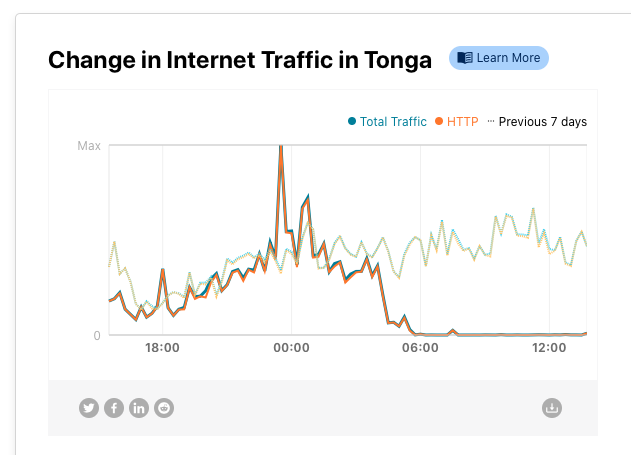As part of our measurement platform, we run 100s of millions of traceroutes per day - normally 1.5 million traverse AS3356 per hour.
At the nadir of the #centurylinkoutage, we were only seeing 474k successful traceroutes via AS3356 - a drop of 68%!
map.internetintel.oracle.com/?root=traffic&…
At the nadir of the #centurylinkoutage, we were only seeing 474k successful traceroutes via AS3356 - a drop of 68%!
map.internetintel.oracle.com/?root=traffic&…
https://twitter.com/InternetIntel/status/1300110706730307586
Because of the massive scale of these networks, these charts rarely exhibit any movement.
The disturbance caused by the outage and subsequent de-peering is visible on the charts of other "Tier-1" telecoms in the DFZ.
map.internetintel.oracle.com/?root=traffic&…



The disturbance caused by the outage and subsequent de-peering is visible on the charts of other "Tier-1" telecoms in the DFZ.
map.internetintel.oracle.com/?root=traffic&…




To get a feel for how traffic changed globally during the outage, we can use this tool to look out incoming traceroutes to various content providers like these:
map.internetintel.oracle.com/?root=traffic&…



map.internetintel.oracle.com/?root=traffic&…




Because of the importance of AS3356 to the global internet, major cloud providers experienced impacts to varying degrees.
map.internetintel.oracle.com/?root=traffic&…



map.internetintel.oracle.com/?root=traffic&…




Access networks both foreign and domestic (US) can be seen impacted by the degradation and loss of AS3356, arguably the most important transit in the world.
map.internetintel.oracle.com/?root=traffic&…



map.internetintel.oracle.com/?root=traffic&…




• • •
Missing some Tweet in this thread? You can try to
force a refresh













